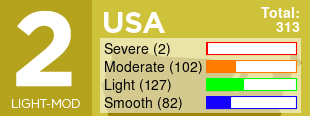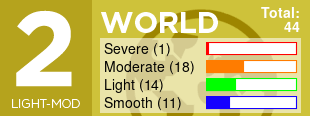Are you an Android developer and love the site? Contact us
updated (Apr 14, 2024)
What are all the noises you hear on a plane?
Published December 12, 2023
As soon as you’re seated in your plane, you’ll start to hear a lot of different noises: before and while pushing from the gate, while taxiing, and of course in flight and during landing. That’s also true during episodes of light or moderate turbulence, where things might creak and clank. Let’s explore what those sounds are and what they mean.
During the seating process, luggage is still loaded into the cargo area. You can hear bangs and bumps and cargo doors closing. Then, depending how close you are to the front, you can hear the flight attendants close the front door and also close and latch all interior doors and cabinets. After the plane is pushed back from the gate, the pilots will start the engines, either from an auxiliary power unit (APU) or ground power unit (GPU) or a combination of both. In most cases, the left engine is started first. You’ll hear the low hum of the engines as pilots monitor for normal operation.
When all looks good in the cockpit, you will start to hear the engines working more as you taxi to your runway. During taxi, pilots will also perform takeoff checks on flight controls and extend the flaps and slats for takeoff. Depending on the type of technology on your plane, this happens either hydraulically, which can make quite a bit of whirring noises, or “by wire,” which refers to electronic interfaces and won’t cause much sound. You might also hear chimes and announcements, mostly for flight attendants to be seated and ready for takeoff. As soon as the plane is cleared for takeoff, pilots will proceed with revving up the engines to full takeoff speed, and after one last check, release breaks and speed down the runway. This is usually the noisiest part of your flight, as engines work at their maximum power. You might hear some creaking in overhead compartments, as the plane rumbles over uneven runway surfaces. When the wheels lift off from the ground, the rumbling stops, and soon after, you’ll hear the landing gear pulling up into the fuselage and the landing gear doors closing shut. After a few minutes, you’ll hear the flaps retracting again and the pilot will eventually reduce power from the initial full speed. At 10,000 feet, you’ll hear another chime, which indicates to flight attendants that they can get up if the air is smooth.
During the climb to cruising altitude, you might hear the engines slow down or speed up. Pilots follow instructions to stay at certain altitudes and climb again when other plane traffic has passed. While cruising, the sound will be a rather monotonous hum. For many, this white noise is a good way to fall asleep. During episodes of rough air or turbulence, sudden jolts or sideway movements of the plane can be accompanied by engine sounds as pilots adjust to air currents or move out of the present altitude to find smoother air. Even light turbulence can cause parts of the plane to creak and groan, due to intentional flexing of the plane body and structures. If you observe carefully, you will see that all elements built into the plane such as walls, luggage compartments, and cupboards are modular with small spaces between them to allow for some movement. They’re built to absorb that movement, but surfaces touching or rubbing against each other causes creaky noises that can be unsettling, but are completely expected.
As your plane gets closer to the destination, the pilot will initiate a gradual descent that starts with engines powering down. You can often hear a distinctive whining or whistling sound as the plane descends. You might perceive less engine noise, but can now hear the aerodynamic sounds the plane creates as it glides at still full speed. As you get closer to your target airport, the pilot will further reduce the speed and deploy flight controls to slow the plane down. You might see spoilers on the wings stand up, and flaps and slats are extended again to get ready for landing, making the same hydraulic noises you heard during takeoff. The landing gear gets deployed and you can feel and hear the door open and wheels extend, which creates additional airflow noise during the last part of the flight. During the last phase of the approach, the pilot will carefully control the speed and altitude, so you might hear the engines speed up again occasionally. Touch down can be very smooth, or a bit of a bump, depending on wind conditions and other factors. Either way, the plane will be just fine. On the way back to the gate, the pilot will return the flaps and slats to their locked positions.


